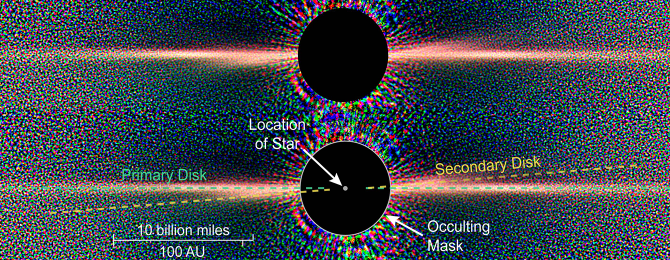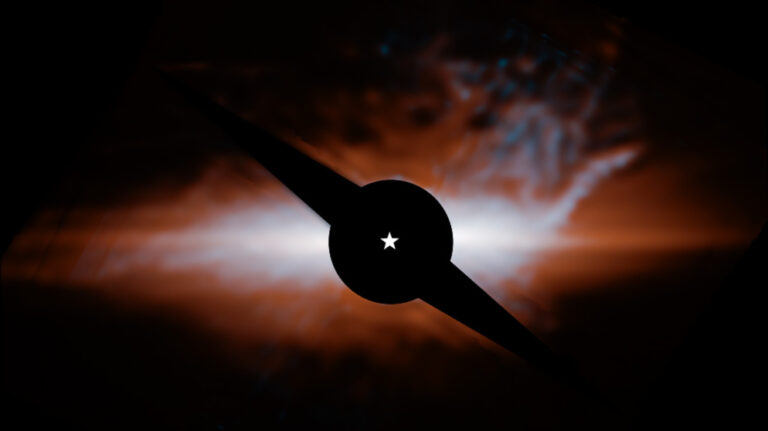Beta Pictoris is one of the most well-studied stars in the sky, but it took the Webb telescope to uncover this peculiar structure.
There is a star called Beta Pictoris that is only 64 light-years away from Earth, which places it right in the middle of our own cosmic backyard. Because of its proximity, astronomers have been able to investigate the most minute aspects of this immature solar system, such as the two gas giant exoplanets and debris disks that it contains. Now, a group of scientists from all around the world have directed the powerful James Webb Space Telescope toward Beta Pictoris. They have found a new feature, which is a wispy “cat’s tail” of gas that extends away from the disk. Nothing just like it has ever been observed by scientists, and it would not have been visible if it weren’t for the Webb Space Telescope.
There is a star called Beta Pictoris that is larger and brighter than the Sun. It has already established itself firmly in the main sequence of its evolution, despite the fact that it is just 15-25 million years old. Two different debris disks have been detected by previous research using ground-based observatories and the Hubble Space Telescope. The Hubble Space Telescope was able to identify the more faint of the two with its detection in 2006. A youthful, turbulent solar system that is saturated with dust and gas is the ideal application for the Webb telescope, which is capable of seeing further into the infrared than Hubble or any other ground-based telescope.
In order to view Beta Pictoris, the team, which was led by Isabel Rebollido from Spain’s Astrobiology Center, utilized the Near-Infrared Camera (NIRCam) and the Mid-Infrared Instrument (MIRI) installed on the James Webb Space Telescope. As shown in the image above, the primary debris disk has been blocked so that the secondary disk can be seen in its entirety. On the right side, you might be able to see the structure that was previously identified as a “cat’s tail” disappearing into the white space.
Because researchers in the field of astronomy have never witnessed a structure quite like this one, it is hard to determine with absolute confidence how it came into being. However, the group that was responsible for this investigation has developed a theory that is consistent with the evidence that is now available by using computer simulations. A catastrophic event, such as a collision between two big asteroids or comets, takes place at the beginning of the process. During the process of expansion, the majority of the debris continues along the same orbital route as the objects that collided with it. Solar wind from the star, on the other hand, causes the material that is the lightest and “fluffiest” to be pushed away from the orbital plane, which results in the winding tail that can be seen in the image.

Due to the fact that the tail is not even visible in the data collected by NIRCam, it is practically undetectable to the majority of equipment. Taking this into consideration, it appears that the two disks are made of distinct materials. MIRI is more sensitive to long wavelengths, which enables it to see through clouds of dust and detect even modest temperature rises more accurately than other sensors. It’s possible that the secondary disk contains a lot of darker components that aren’t particularly noticeable in the optical spectrum. But in the infrared spectrum, they emit a brilliant glow.
The data from Webb suggests that the tail is far warmer than expected. According to Christopher Stark, a co-author of the study who works at the Goddard Space Flight Center for NASA, “MIRI clearly showed us that the material of the secondary disk and cat’s tail is hotter than the main disk.” It has been demonstrated through these studies that Beta Pictoris is significantly more active than was previously believed. Considering that the team believes that the occurrence that resulted in the tail may have occurred within the past century, it is quite a fortunate coincidence that we were able to observe it at the proper moment and with the appropriate instrument.

